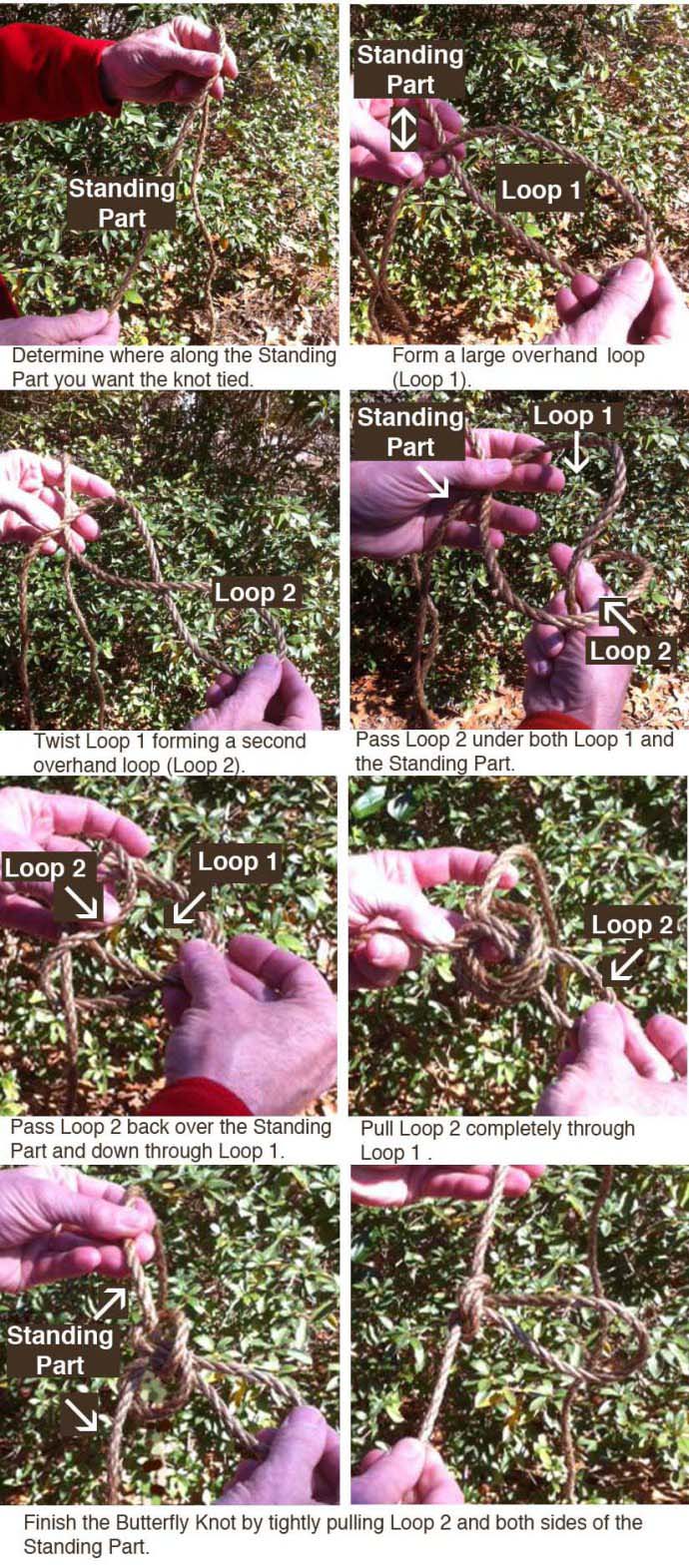VIEW VIDEO: How to Tie a Butterfly Knot

The following text is by Adolph E. Peschke as presented in the 1998 printing of the 1993 edition of the Pioneering Merit Badge Pamphlet:
A butterfly knot is a fixed loop tied in the middle of a rope. There are a number of other knots that do the same thing, but the butterfly knot tends to work better because it doesn’t jam when strained and it’s easy to untie.
Since it’s tied in a symmetrical fashion, strain can be put on it from any direction. Even though this knot is usually tied in the middle of the rope, you can also tie it at the end of the line if you need a fixed loop that is easily untied.
The butterfly knot is a favored knot for mountain/rock climbers, used for hand or foot loops or used to hook their carabiners into. It has many uses in pioneering work.

Pioneering Uses
- When using a rope to pull a heavy object (such as a log), tie a series of butterfly knots to form loops for each person’s hand or shoulder.
- When climbing a rope, you can tie a series of butterfly knots to form loops for your hands and feet.
- To provide a fixed loop to use with a toggle.
- When making a rope tackle, the loop in the butterfly knot serves as the pulley. (See Rope Tackle.)
- To tie up horses or anchor canoes on shore, tie a series of in a picket line for each horse or canoe.

The butterfly knot, also named the Alpine Butterfly and the Lineman’s Loop, has been referred to as the “Queen of Knots” by Pioneering legend, John Sweet.


12 thoughts on “Favorite Pioneering Knots: Butterfly Knot”